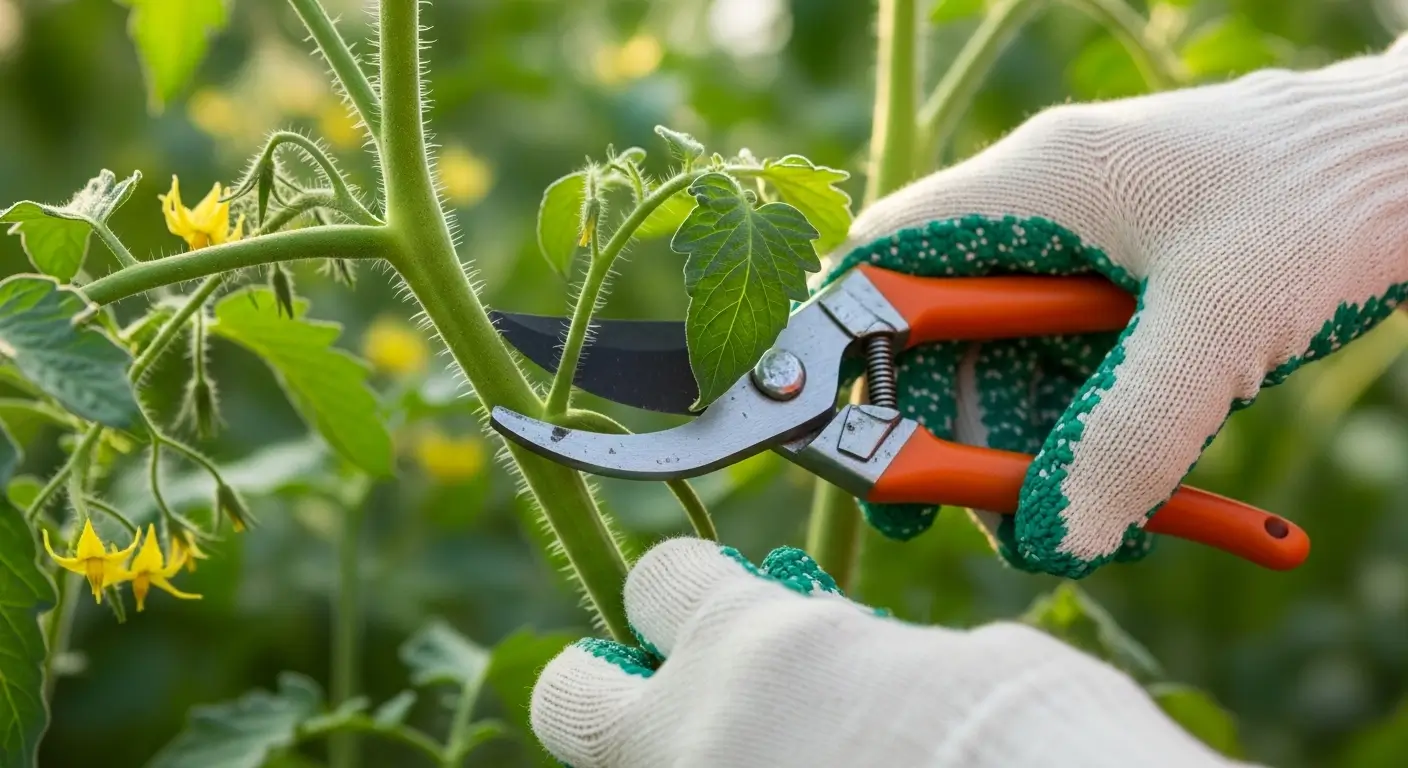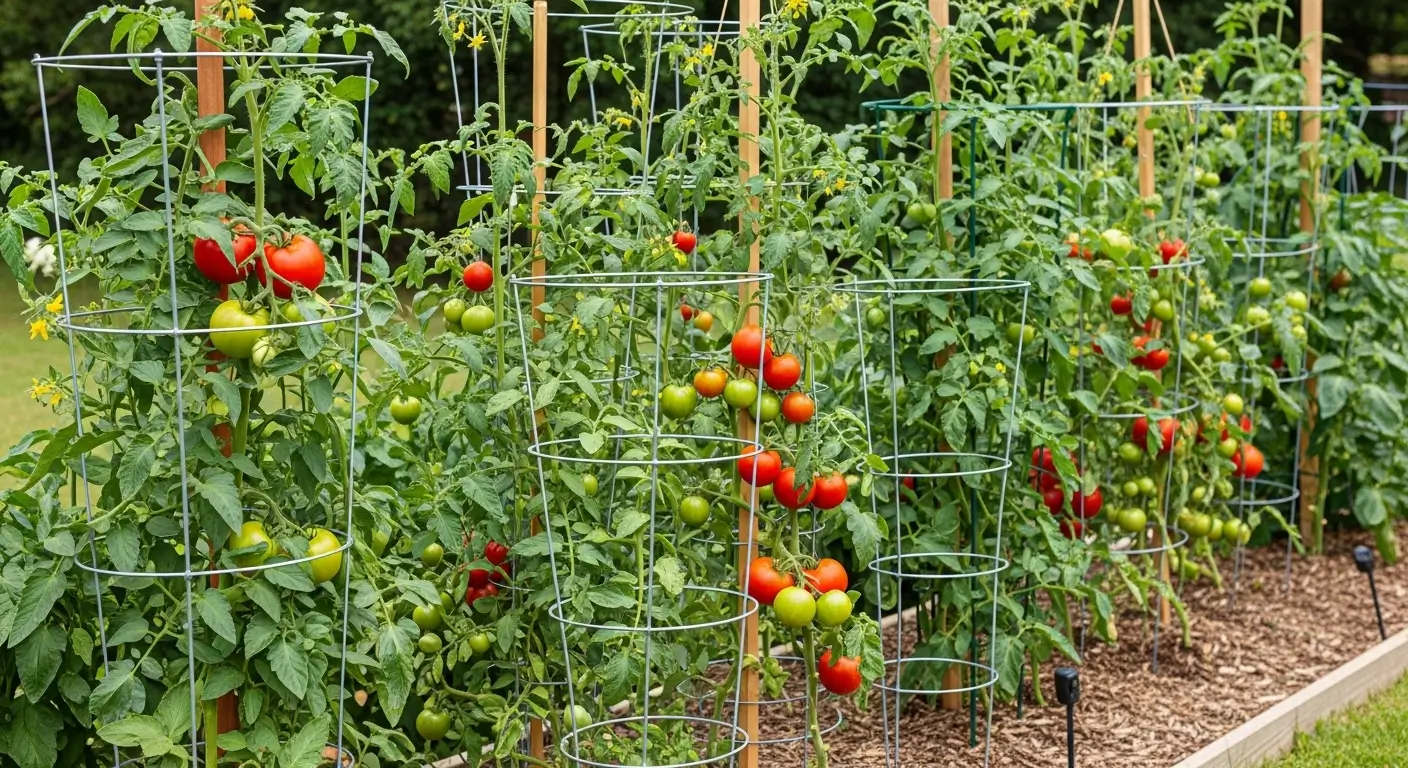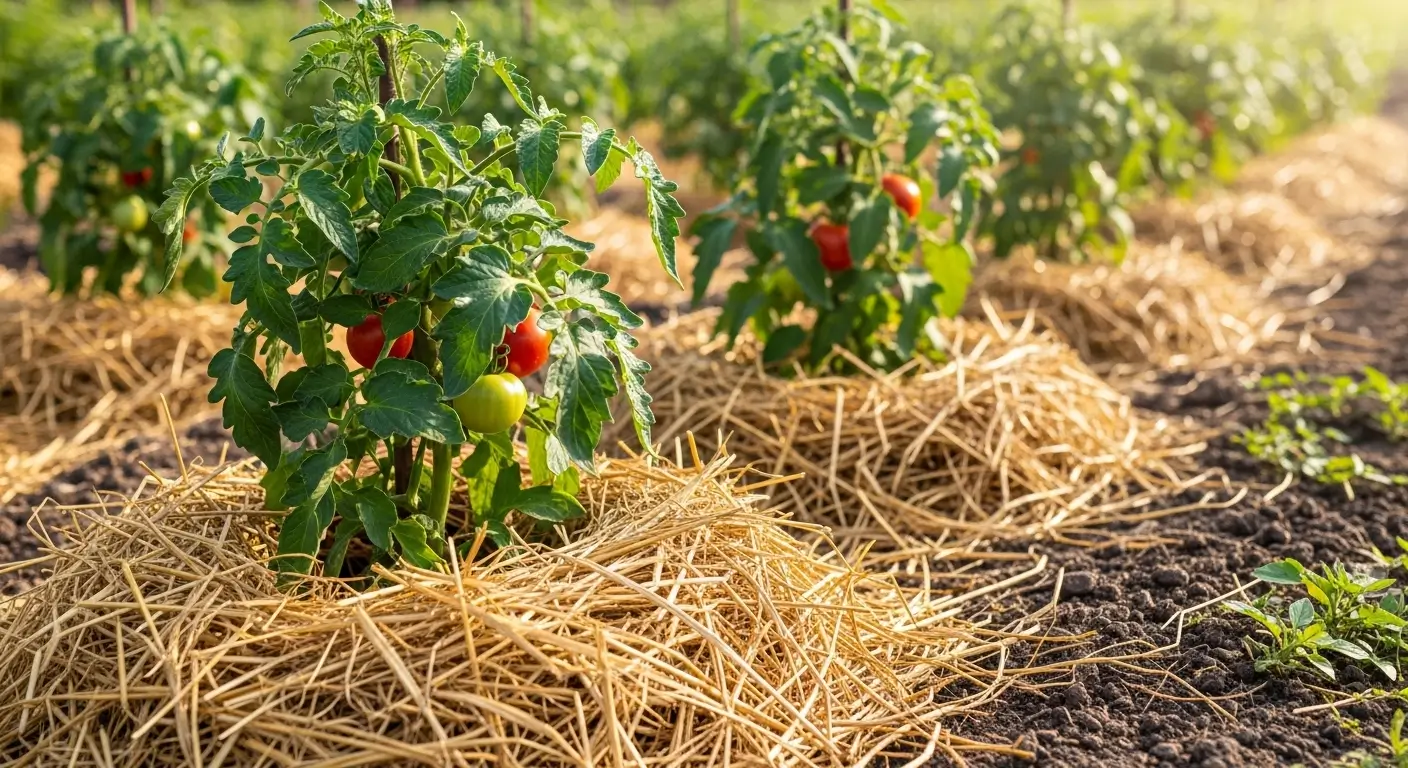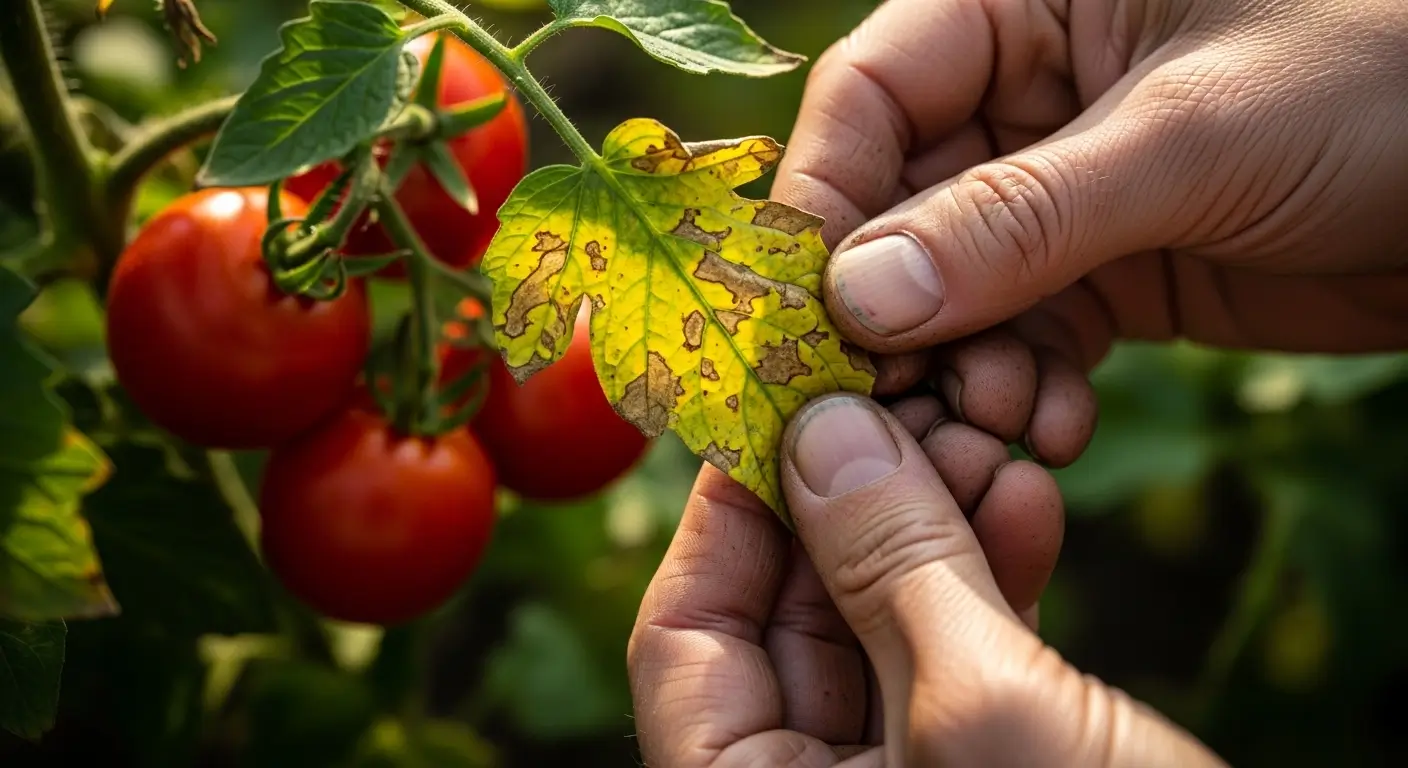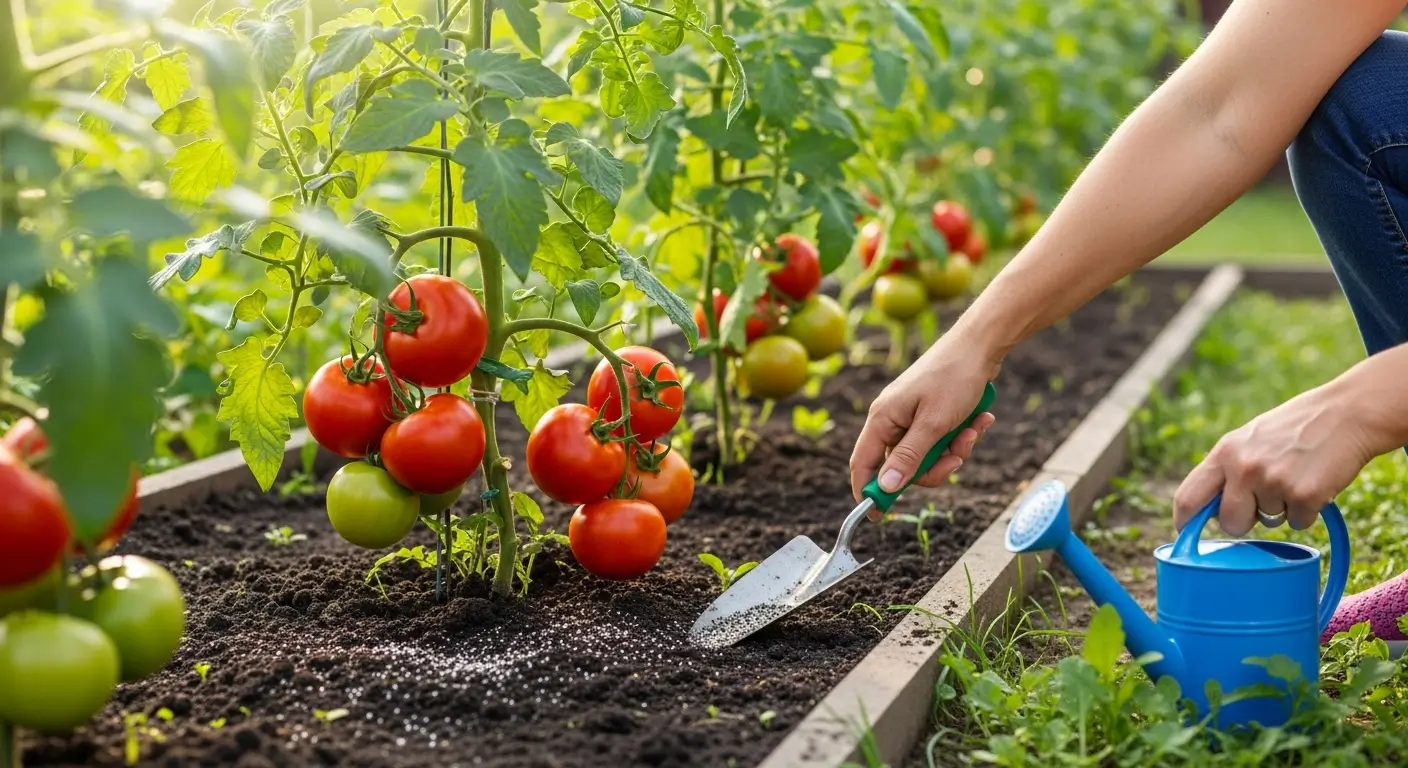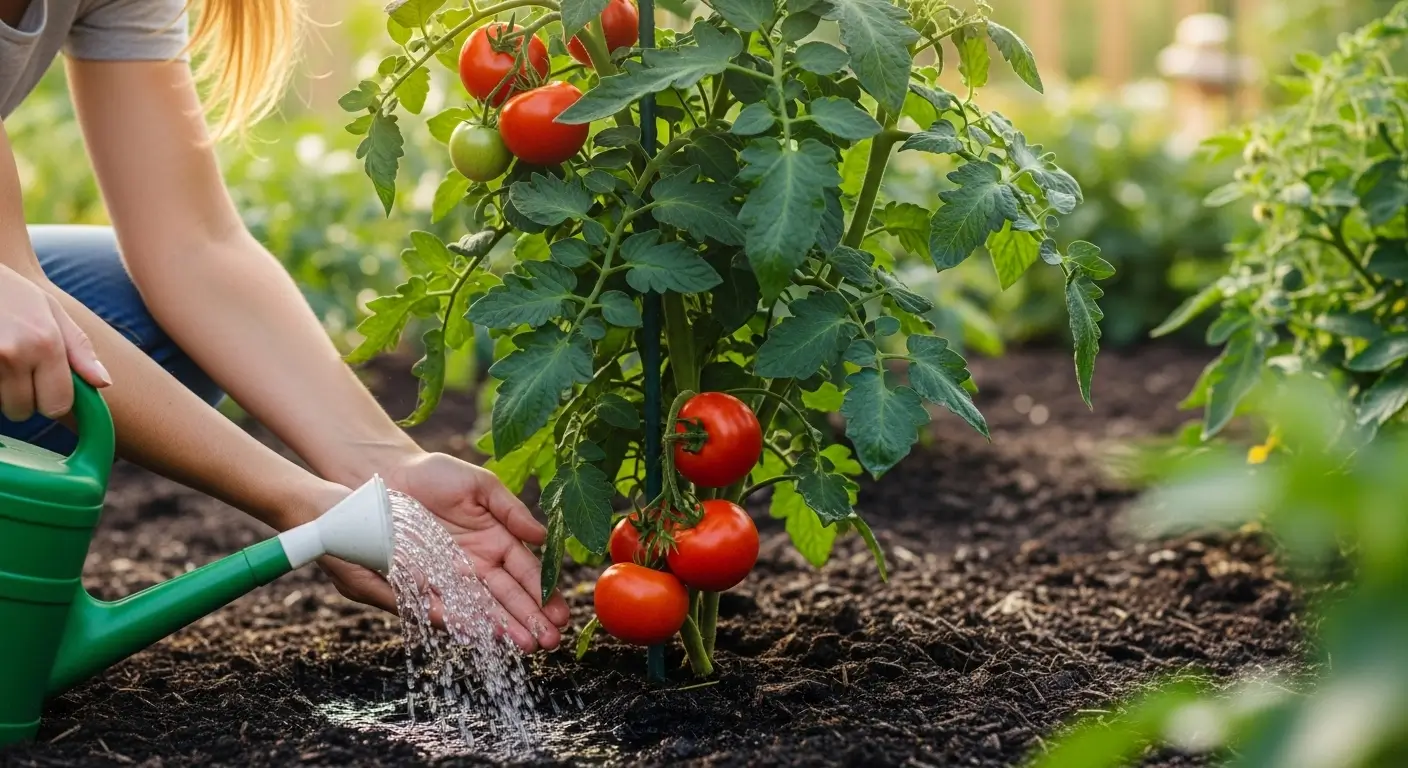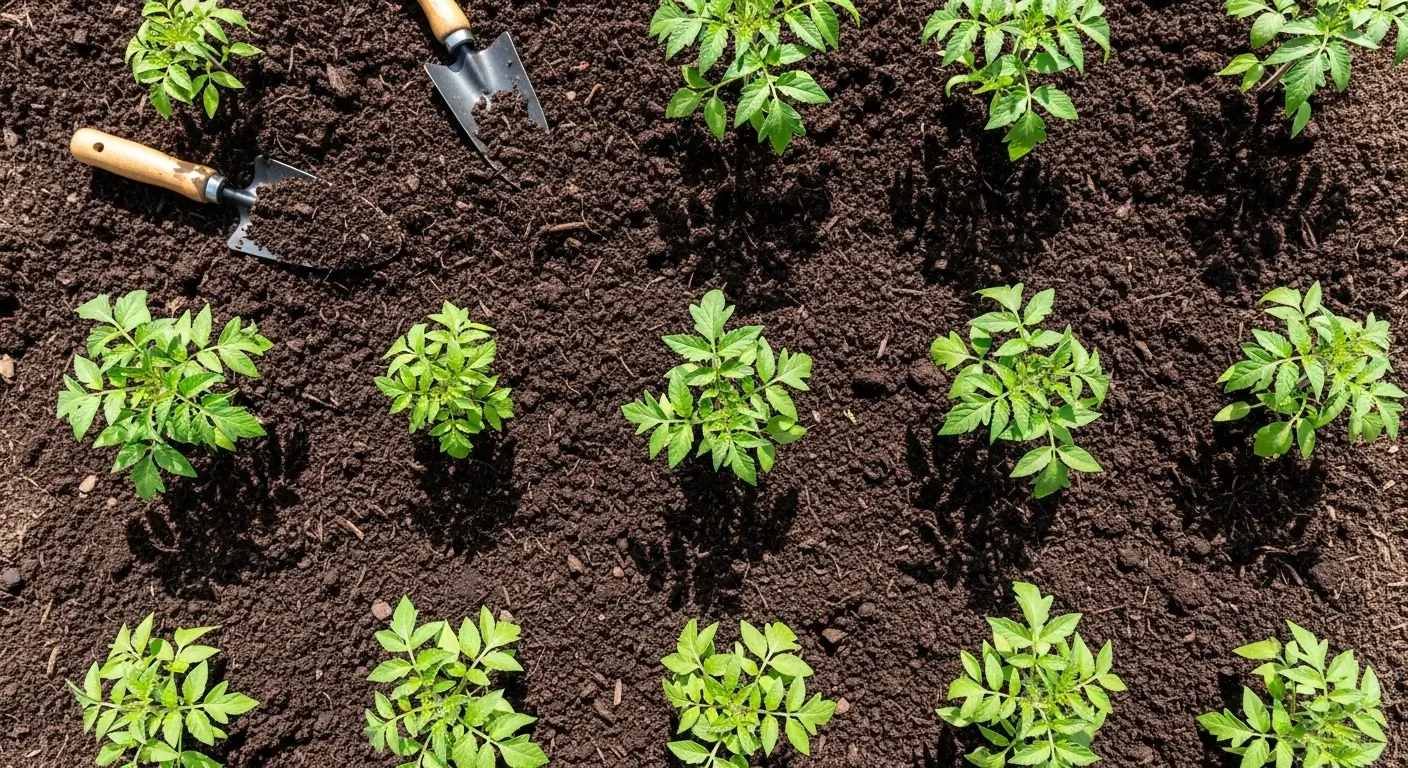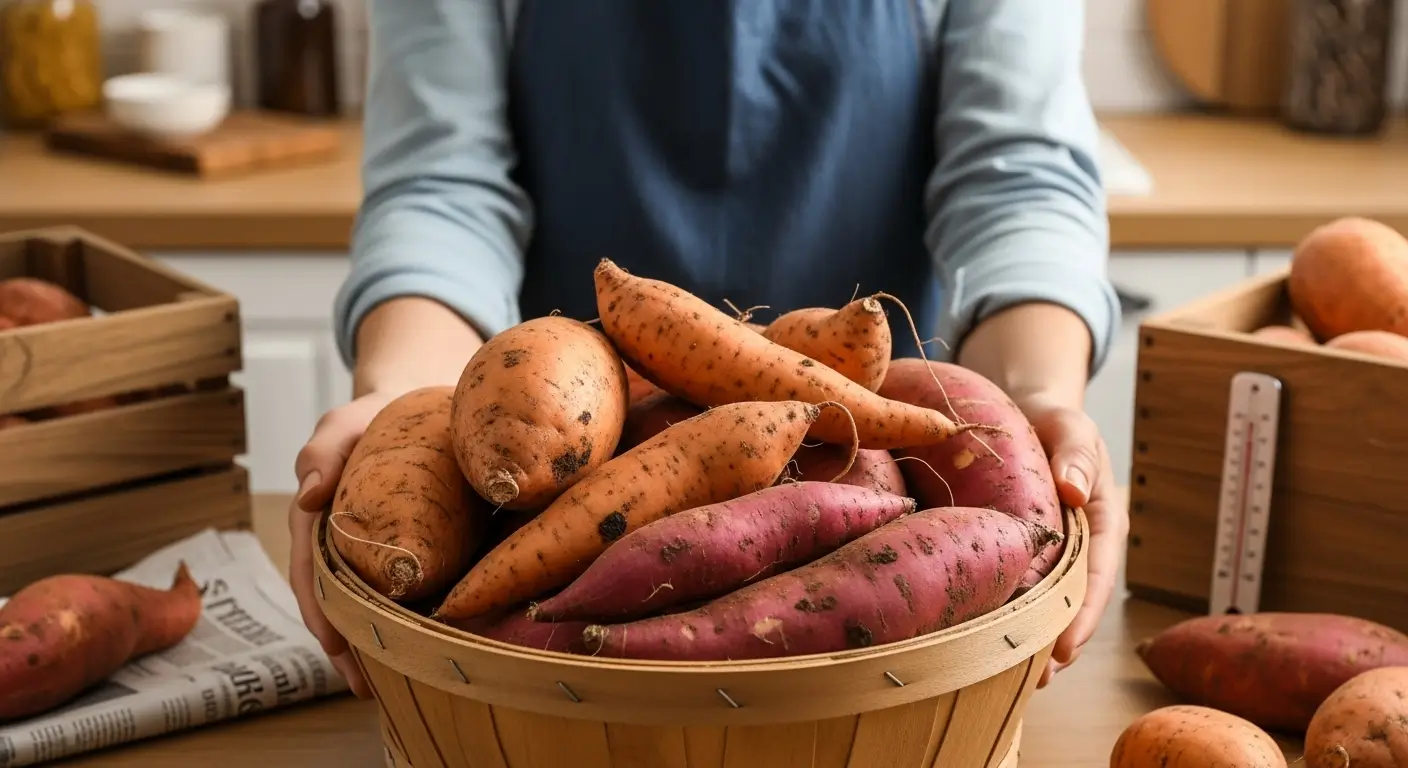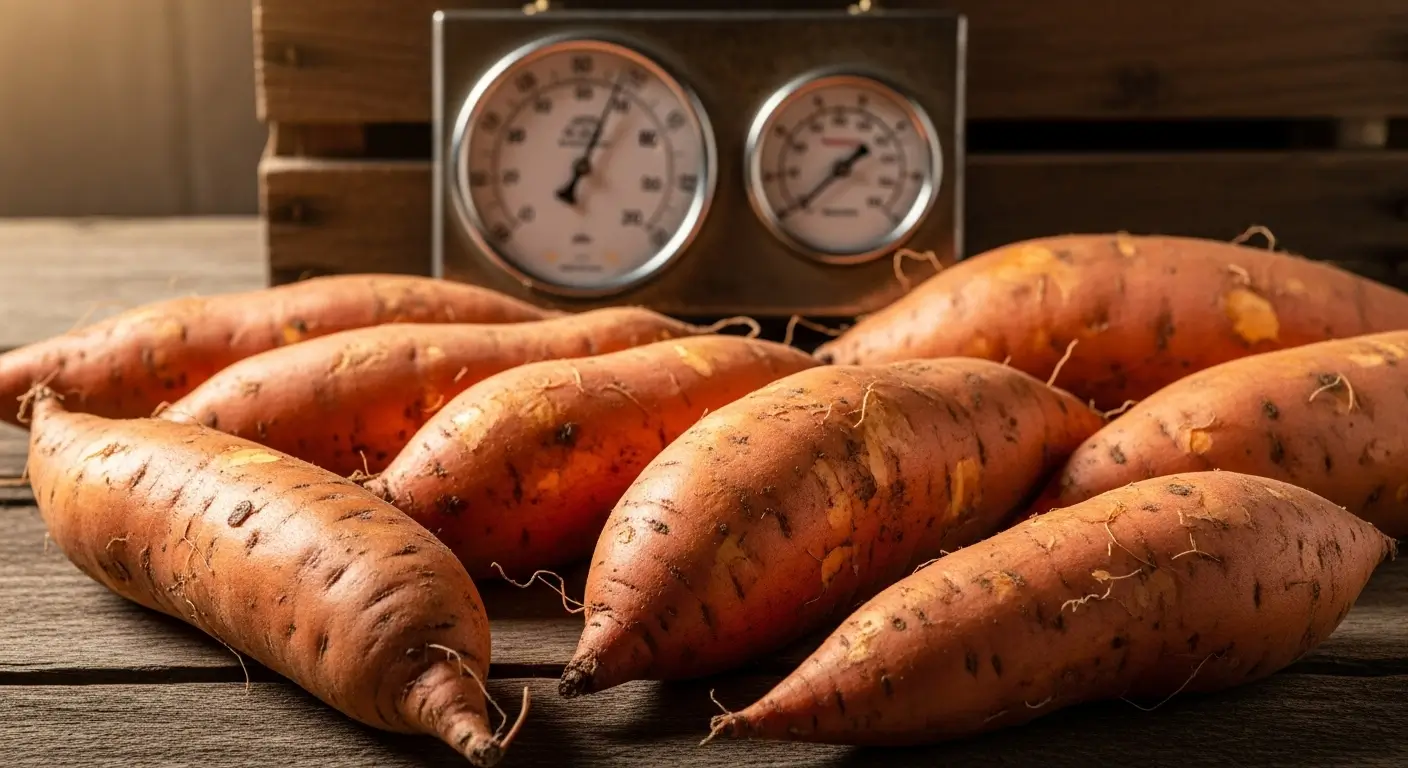Okay, so picture this: I’m standing in my grandma’s backyard, holding these ancient pruning shears that probably belonged to my great-grandfather. I’m shaking because I’m so scared I’m gonna murder her prize tomato plants. Grandma rolls her eyes and goes, “Grace, honey, they’re plants, not newborn babies. Give ’em a trim – they’ll love you for it.”
That was like fifteen years ago, and wow, was she right! Learning how to prune my tomatoes has been such a game-changer. I went from having these sad, pathetic harvests to actually bragging to my neighbors about my tomato hauls. And honestly? Now I look forward to pruning day – it’s become my zen time.
If you’re sitting there thinking, “But what if I mess up and kill everything?” – trust me, I get it. Let me walk you through everything I’ve figured out about pruning tomato plants over the years. There is no fancy jargon, just real talk from someone who’s made almost every mistake in the book.
Table of Contents
Why Pruning Tomato Plants Makes All the Difference
Here’s the deal with tomato plants – they’re green growing machines with zero self-control. Like, suppose you don’t step in and give them some guidance. In that case, they’ll spend all their time making leaves and being bushy instead of focusing on what we actually want: those gorgeous tomatoes we’re dreaming about.
I learned this lesson the embarrassing way. In year three of my gardening adventure, I had these absolutely massive tomato plants that looked like they belonged in a jungle. Meanwhile, my neighbor Mrs. Chen had these tidy little plants loaded with fruit. I’m talking seriously loaded. Turns out she was out there pruning every week while I was letting mine do whatever they wanted.
When you prune right, you tell your plant, “Hey, less time making leaves, more time making tomatoes, please.” Plus, you get better airflow through the plant, which means fewer gross diseases. And believe me, dealing with tomato blight is not how you wanna spend your summer.
Understanding Your Tomato Types: Determinate vs Indeterminate Pruning
Okay, before we start chopping things up, you’ve gotta know what kind of tomatoes you’re growing. This isn’t just garden nerd stuff; it matters a ton for how you should prune.
Determinate Tomatoes: The “Bush” Types
These guys are like the responsible ones of the tomato world. They grow to a specific size, make all their fruit at once, and then they’re done. Think of them like those compact cars – they do their job efficiently without wasting too much space.
With these determinate types, you wanna go easy on the pruning. I usually just clean off the bottom leaves (the ones touching dirt – gross) and maybe thin out spots where it’s getting too crowded. That’s pretty much it.
The thing with pruning determinate vs indeterminate tomatoes is that these bush types have basically programmed themselves to stop growing at a certain point. If you go crazy with the pruning shears, you might actually hurt your harvest instead of helping it.
Indeterminate Tomatoes: The Climbing Giants
These are the overachievers – they keep growing and growing like some kind of tomato Jack’s beanstalk situation. I’ve had some reach my second-story window, no joke! They keep making fruit all season long, which is fantastic, but it also means they can handle way more aggressive pruning.
This is where you’ll spend most of your pruning time. My indeterminate plants get way more attention because they actually love it when you keep them in check.
The Essential Guide to Removing Tomato Suckers
Let’s talk about suckers – and no, I don’t mean the candy (though I’ve definitely snuck a few lollipops during garden time). These sneaky little shoots pop up where the main stem meets a branch. When I started gardening, I had no clue what these things were, and they freaked me out. Now? It’s like a treasure hunt finding them all.
Identifying Suckers
Once you know what to look for, spotting suckers is pretty straightforward. They grow right in that little pocket where a branch connects to the main stem, making this “Y” shape. Early on, they’re just tiny green shoots that look innocent enough, but if you ignore them, they’ll turn into full-blown branches with their own agenda.
The Best Time to Remove Suckers
I’m out there checking for suckers every few days during tomato season – it’s become part of my morning routine. The sweet spot for removing them is when they’re about 2-4 inches long. At that size, you can usually pinch them off with your fingers, which is precisely what I do most of the time.
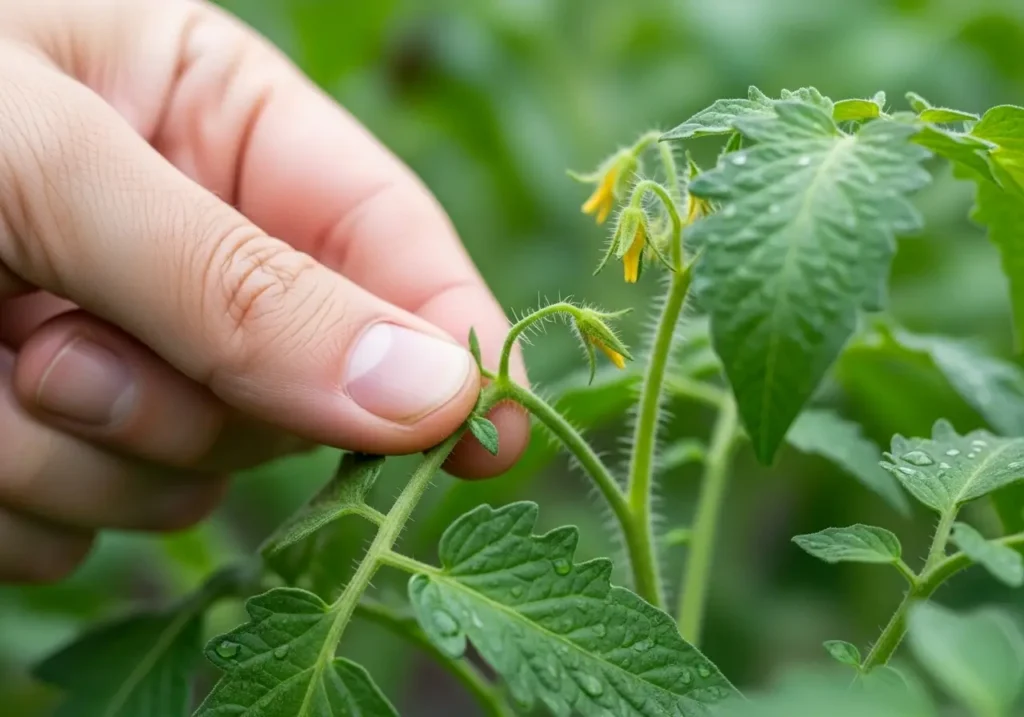
My husband thinks I’m nuts because I’ll be out there at 7 AM with my coffee, wandering around pinching stuff off my tomato plants. He calls it my “plant whispering time.” Honestly, he’s not wrong. There’s something super peaceful about it.
When to Use Pruning Shears
If you’ve got bigger suckers (like bigger than your thumb), grab your pruning shears. Just make sure they’re clean! I keep a little container of rubbing alcohol and a rag nearby to wipe down my tools between plants. I learned that one the hard way after accidentally spreading some nasty disease through half my garden. Ugh, that was a bad year.
Step-by-Step Pruning Techniques That Actually Work
The Bottom-Up Approach
I always start at the bottom and work my way up – it keeps me organised and makes sure I don’t miss anything important.
Step 1: Clean Up the Bottom. First, I get rid of any leaves that touch the ground or are within about 6 inches of it. These are disease magnets because all the nasty soil can splash onto them when it rains. I’m pretty ruthless about this part – better safe than dealing with plant plague later.
Step 2: Check Out the Middle. Look for spots where the leaves are all crowded together and blocking airflow. Remove some of the older, yellowing leaves, but don’t go nuts. Your plant still needs those leaves to make food for itself – it’s not magic!
Step 3: Deal with the Top. For those indeterminate varieties, you might wanna “top” the plant once it gets as tall as whatever you’re using to support it. I usually let mine go until they hit about 6 feet (because that’s about as high as I can reach without getting the ladder out). I pinch off the very top growing tip.
The Leaf-to-Fruit Ratio Rule
Here’s something I wish someone had told me way earlier: try to keep about 1-2 leaves above each flower cluster. This ensures your developing tomatoes get enough plant power to grow while keeping everything manageable. It’s like the plant equivalent of work-life balance.
Timing Your Pruning for Maximum Results
Getting the timing right has made such a huge difference in my harvests. Doing a little bit regularly works way better than trying to do it all at once (kinda like cleaning your house).
Early Season (First 4-6 weeks after transplanting)
When the plants are still getting settled in, I keep it pretty light. Just removing the bottom leaves and tiny suckers. Think of it like gentle encouragement rather than major surgery.
Mid-Season (Peak growing time)
This is when I get more serious about it. July and August, I’m out there every few days being the sucker police and thinning out crowded spots. The plants are strong enough to handle it and respond well.
Late season (6-8 weeks before first frost)
Toward the end of the season, I actually get more aggressive. Any new flowers that show up aren’t gonna have time to turn into ripe tomatoes anyway, so I remove them to help the existing fruit finish up faster. It’s like triaging your garden.
Common Pruning Mistakes (And How I Learned to Avoid Them)
Over-Pruning Young Plants
Guilty as charged! I was way too eager with the pruning shears in my first few years. Young plants need their leaves to build up strong roots. Now I wait until they’re at least a foot tall before doing anything significant.
Pruning Wet Plants
Wet conditions are like disease superhighways because moisture creates perfect conditions for bacterial and fungal diseases to spread between plants. I learned this one the expensive way when I lost three plants to bacterial wilt. Iowa State Extension explains that proper disease management starts with keeping foliage dry and avoiding work on wet plants.
Forgetting to Clean Your Tools
I keep harping on this because it’s so important! A quick wipe with rubbing alcohol between plants can save you heartache. It takes about two seconds, but it prevents so many problems.
Going Too Crazy at Once
Plants can totally freak out if you remove more than about a quarter of their leaves at one time. Now I spread big pruning sessions over a few days so they don’t go into shock.
Tools and Supplies That Make Pruning Easier
You don’t need to spend a fortune, but having decent basic tools makes everything so much easier:
- Good pruning shears: Don’t buy the cheapest ones – trust me. I replace mine every few years.
- Rubbing alcohol and a rag: For keeping things clean between plants
- Garden gloves: Tomato stems can be surprisingly rough on your hands
- Small bucket: For all the plant bits you’re removing
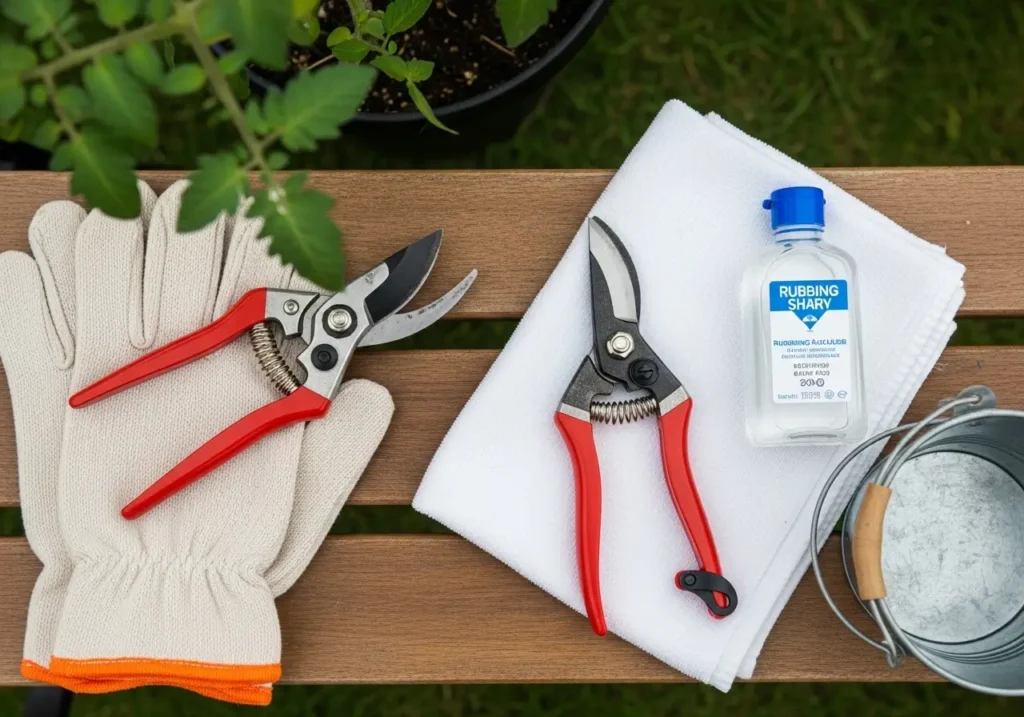
Post-Pruning Care: Setting Your Plants Up for Success
After a good pruning session, I always check to ensure my plants have what they need to bounce back. This usually means double-checking that my watering schedule for tomatoes is on point – they need consistent water after you’ve messed with them.
I also like adding some compost around the base of freshly pruned plants. Think of it like giving them a nice meal after a haircut – they appreciate the extra nutrition.
Seasonal Adjustments for Better Results
What I love about tomato pruning is how it changes throughout the year. Spring pruning is like being a gentle, encouraging parent. Summer is when you get to be the firm-but-fair teacher. And by late summer, I’m basically the tough-love coach trying to get those last tomatoes across the finish line before frost hits.
Every year, it teaches me something new. Last season, I tried leaving more suckers on some plants and being more aggressive with others, to see what would happen. The results were super interesting and helped me fine-tune my whole approach.
Wrapping Up: Your Path to Pruning Success
Learning how to prune tomatoes isn’t rocket science, but it’s also not just about following a bunch of rules. It’s about getting to know your plants and figuring out what works in your garden. Every yard is different, every summer brings challenges, and every gardener develops their own style.
The stuff I’ve shared here works great in my Illinois garden, but don’t be afraid to tweak things to fit your situation. Maybe you’ll discover something I haven’t tried yet – and if you do, seriously, let me know! I’m always up for learning new tricks.
If you want the full scoop on growing amazing tomatoes from start to finish, check out my complete guide. It covers everything from getting your soil ready to actually harvesting your bounty.
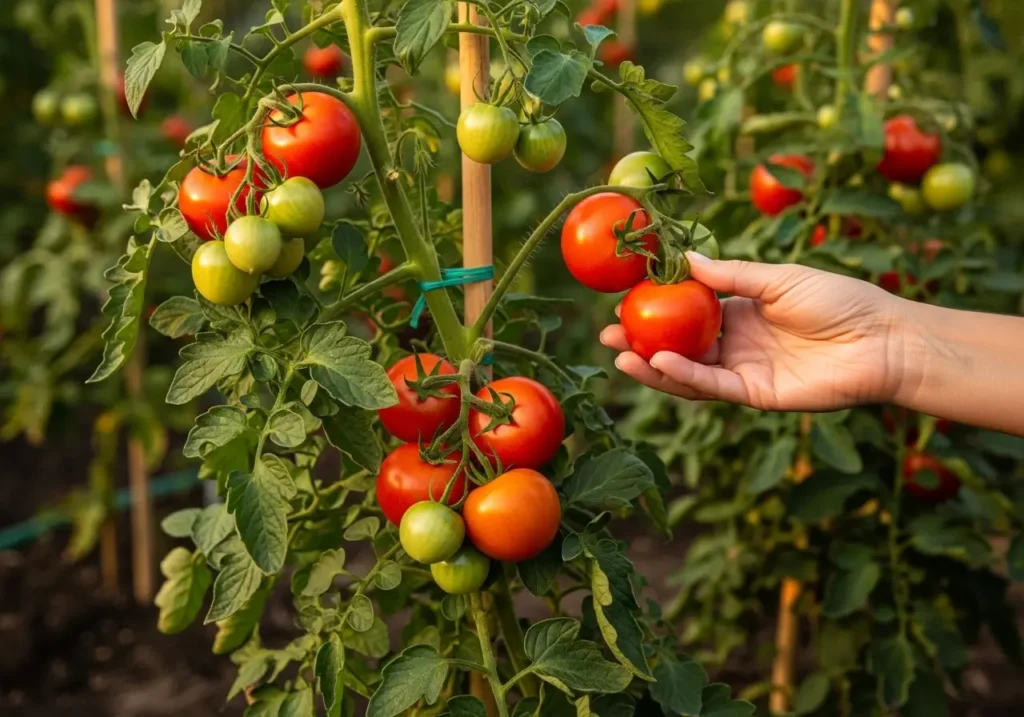
And hey, if you’re still nervous about making those first cuts, remember what my grandma told me: plants are tougher than you think. Start small, be consistent, and don’t stress too much about it. Your tomatoes are gonna reward you with way better harvests, I promise.
Key Takeaways for Successful Tomato Pruning
- Figure out what you’re growing: Indeterminates can handle way more pruning than determinates
- Start small: Catch those suckers when they’re little – way easier to deal with
- Be consistent: A little bit regularly beats one marathon pruning session
- Keep it clean: Seriously, clean your tools between plants – do it
- Watch your timing: Never prune wet plants, and adjust what you’re doing throughout the season
- Trust yourself: Good pruning means better tomatoes – you’ve got this!
So what’s your biggest worry about pruning your tomato plants? Have you tried any of this stuff in your garden yet? I’d love to hear about your wins and “learning experiences” (we’ve all got ’em!). Drop me a comment and let’s chat about what’s working – or not working – in your tomato patch!
Frequently Asked Questions About Pruning Tomato Plants
When is the best time to prune tomato plants?
Prune tomato plants every 3-4 days during the growing season, ideally in the morning when plants are dry. Remove suckers when they’re 2-4 inches long for easiest removal. Never prune wet plants as this can spread diseases between cuts.
What’s the difference between pruning determinate and indeterminate tomatoes?
Determinate tomatoes need minimal pruning – only remove bottom leaves and lightly thin crowded areas. Indeterminate tomatoes can handle aggressive pruning including regular sucker removal, structural maintenance, and topping when they reach support height.
How do I identify tomato suckers that need to be removed?
Tomato suckers are shoots that grow in the Y-shaped junction between the main stem and leaf branches. They start as small green shoots but will develop into full branches with leaves and flowers if left unpruned. Remove them when they’re 2-4 inches long.
What tools do I need for pruning tomato plants safely?
You need clean, sharp pruning shears, rubbing alcohol for sterilizing tools between plants, garden gloves, and a small bucket for plant debris. For small suckers (under 2 inches), you can often just pinch them off with your fingers.
